Common Speedwell
- Figwort or Snapdragon family (Scrophulariaceae family):
- Veronica officinalis L.
- EPPO code:
- VEROF
- Other names:
- Speedwell
Species information
- Lifecycle:
- Perennial.
- Propagation:
- Reproduces by seed and spreading rhizomes.
- Emergence:
- Seed germinates in the fall and in early spring.
- Habitat:
- Common speedwell is more commonly found in perennial cropland, such as pastures and forages as well as in lawns. Other annual and winter annual speedwell species are typically found in fall/winter cereal crops.
- Competitiveness:
- Common speedwell is not considered a strong competitor.
Identification clues
Seedling
- Cotyledons:
- Oblong to ovate with a rounded tip.
- First leaves:
- The first leaves of common speedwell are opposite and lemon shaped. They have finely-toothed margins and they are hairy on both sides.
- Mature leaves:
- Mature leaves remain opposite and the same size as the younger leaves, which is different from most other speedwell species.
Mature plant
- Stems:
- The stem of common speedwell is hairy, much branched and grows more or less upright. Note that creeping stems will root at nodes that touch the ground.
- Flowers:
- Generally, common speedwell flowers in the spring to early summer, and then again in the fall. Each plant has dense, erect spikes that contain numerous small, light blue to light purple flowers on short stalks. The seed pod is heart shaped and hairy.
- Seeds:
- Each heart-shaped seed pod contains several yellowish/orange seeds that are roughly 0.5 mm in size.
- Roots:
- Fibrous roots at nodes of spreading rhizomes.
Often mistaken for
I know it's not Bird’s-eye speedwell because the leaves below common speedwell’s flowers are opposite, whereas bird’s-eye speedwell’s leaves are alternate and the flowers grow on a long stalk.
I know it's not Corn speedwell because the leaves below common speedwell’s flowers are opposite, whereas corn speedwell’s leaves are alternate.
I know it's not Purslane speedwell because purslane speedwell is hairless and has white flowers above alternating oblong leaves, whereas common speedwell is hairy with light blue/purple flowers that are lemon-shaped, hairy and oppositely oriented on the stem.
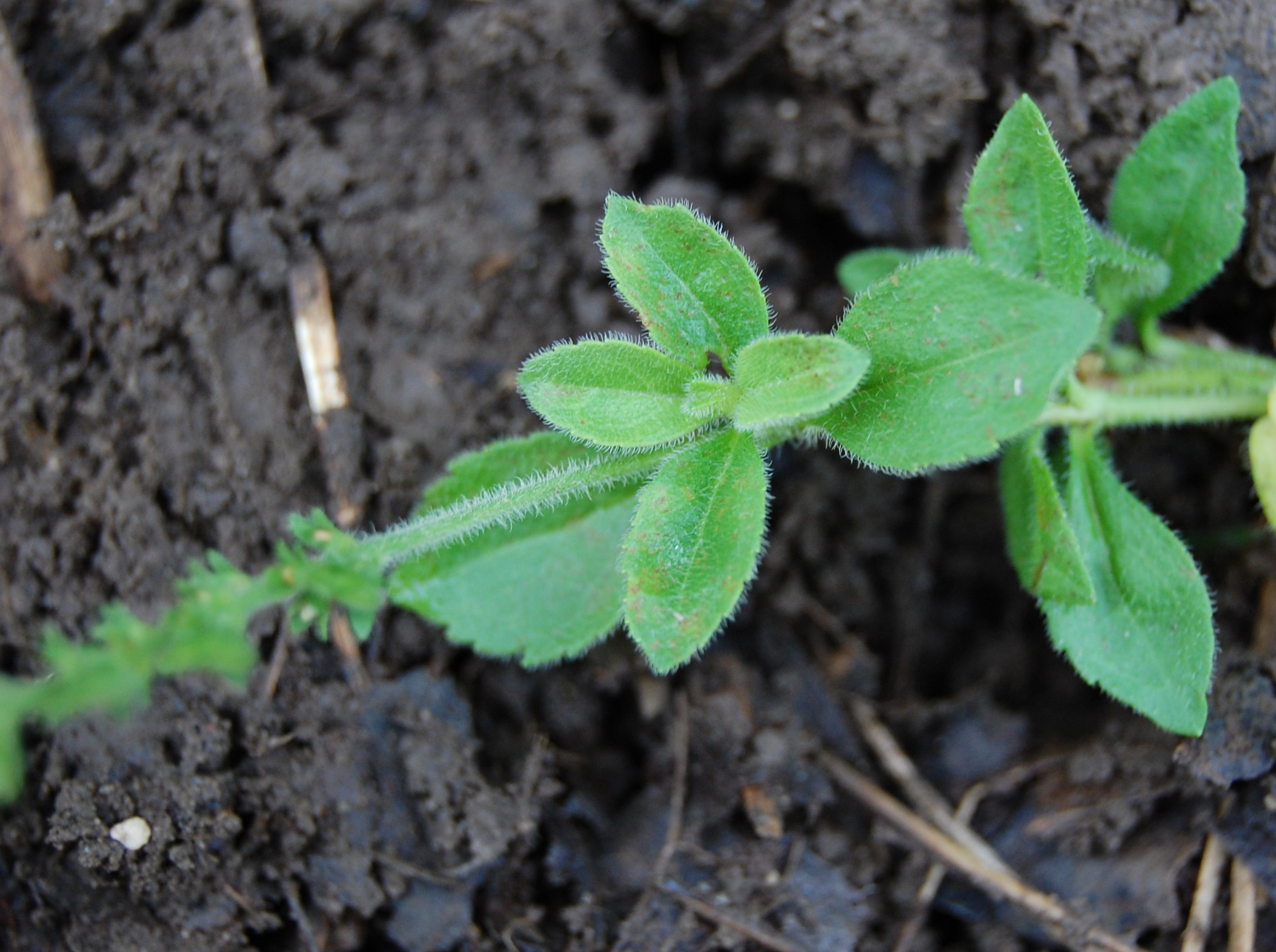
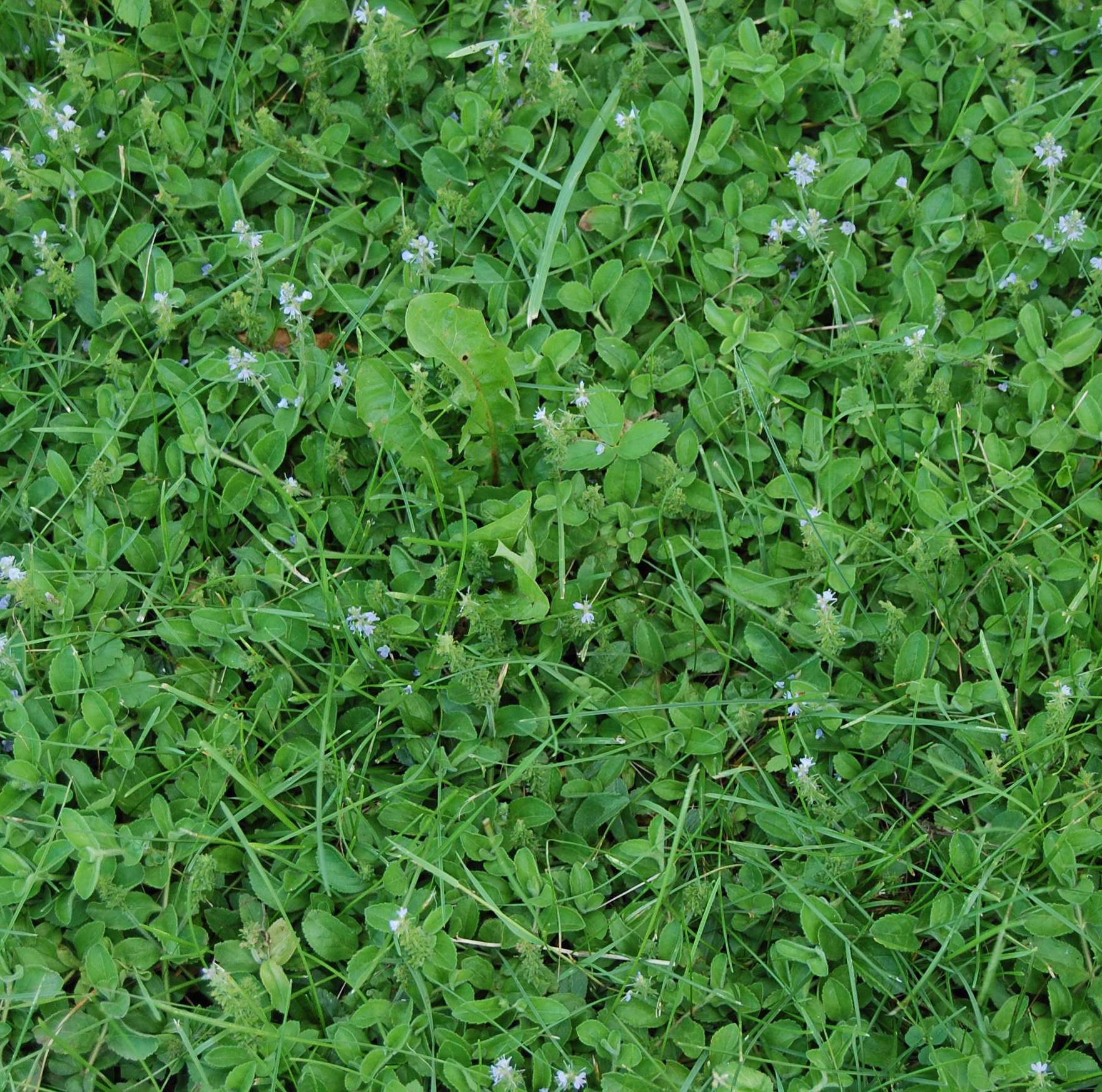
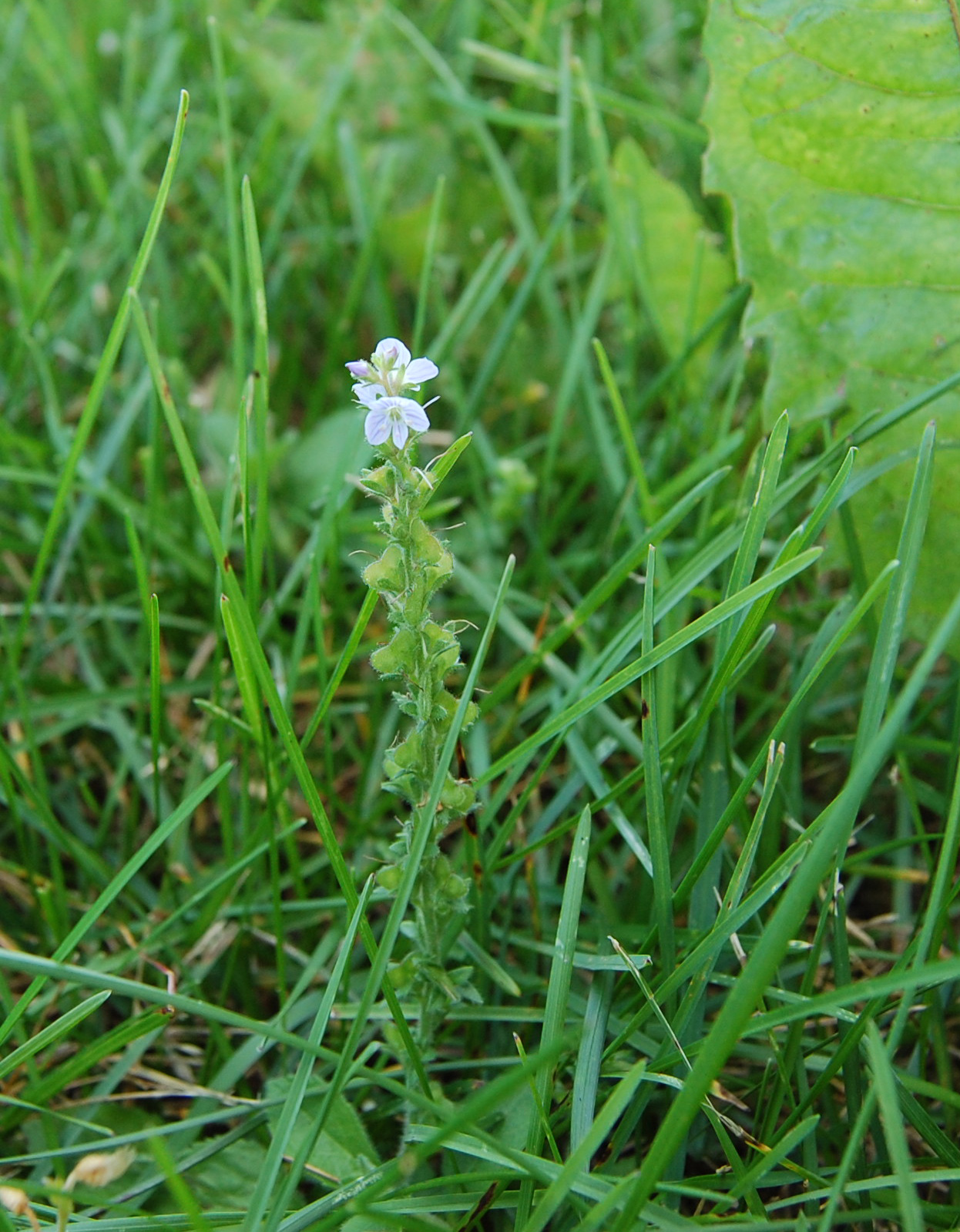
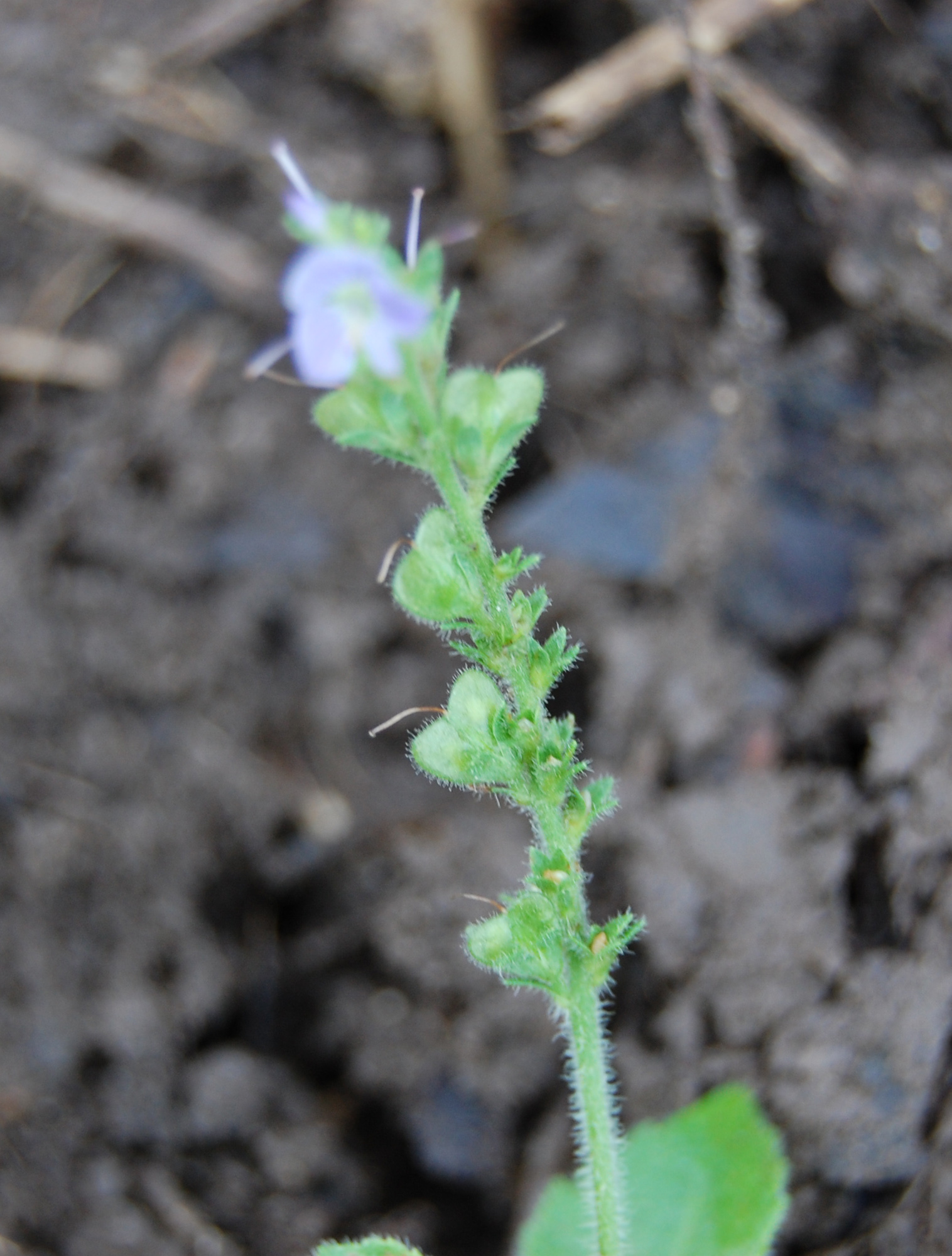
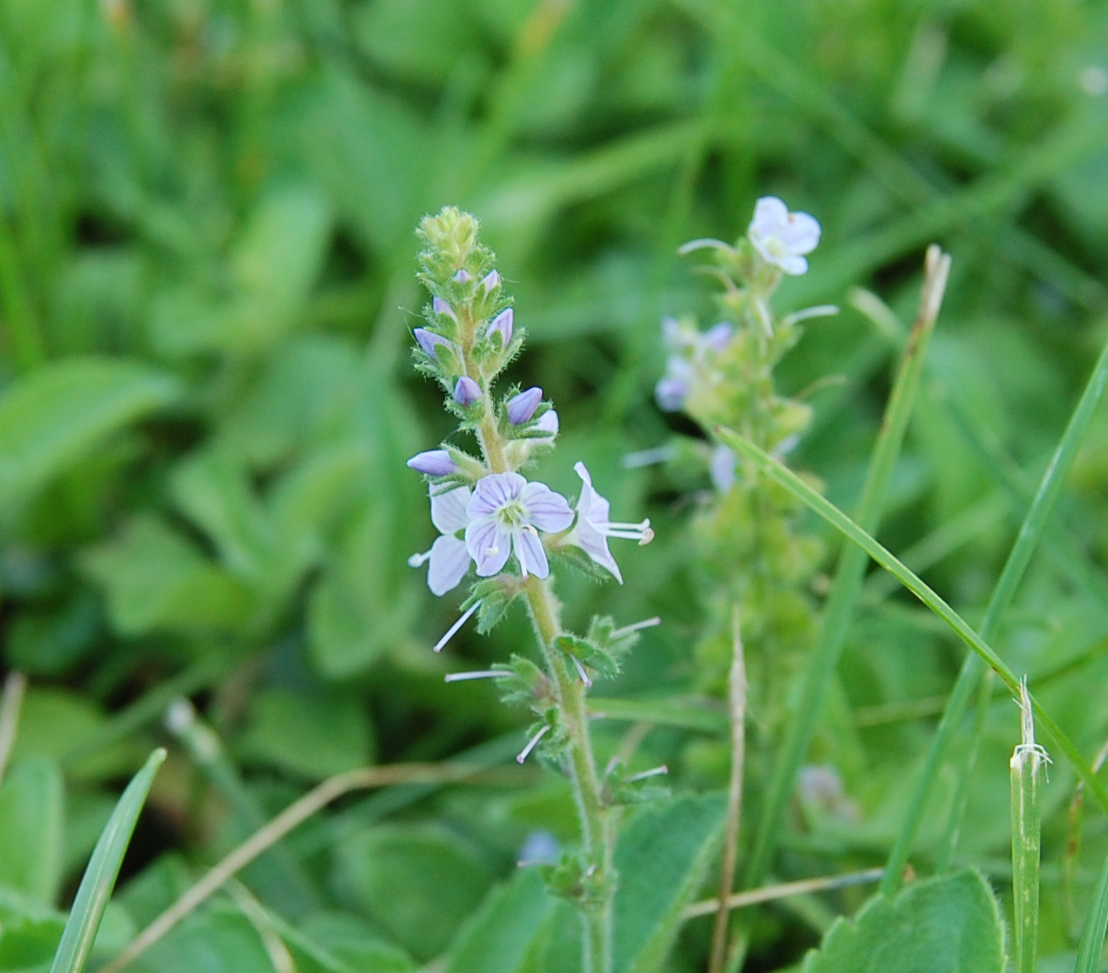
Updated: August 14, 2023
Published: January 13, 2023